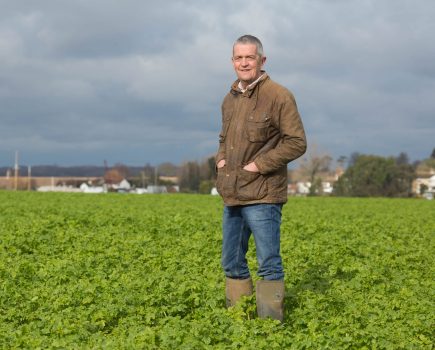In the last few weeks new enhanced stewardship measures have been announced, that if successful may be the route for metaldehyde to gain the stamp of CRD approval on its overdue renewal. But is it a good news story? I’m not so sure.
The reasons I’m a bit reticent about the introduction of a minimum buffer zone of 10m to all field boundaries are partly practical and partly because it seems like a sledgehammer approach to crack and nut – and there is no convincing argument the nut needs cracking!

The practical implications of the new stewardship requirements are mind boggling.
The problem CRD has with metaldehyde is it can’t tick the appropriate boxes when it comes to any possible effects the molluscicide may have on small animals and birds. The environmental risk modelling used to answer these questions is inconclusive – there may be a problem, but equally there may not.
I’d classify myself as on the slightly ‘green’ side when it comes to environmental issues. I get the point that metaldehyde in drinking water isn’t desirable, even if the limit is an arbitrary one. I see the value of buffer zones around watercourses. I even accept that there are fields where using metaldehyde simply isn’t a good idea. But I’m struggling with this concept of buffer zones to all fields.
The reality is that margin-dwelling birds are probably more likely to meet a sticky end by an encounter with the farm cat, a sparrow hawk or magpie. I always thought that the blue colour of slug pellets was intended as a deterrent to birds and mammals anyway.
On a practical level, when does it simply become impractical? Knobbly seed beds are often a headland problem because of compaction. Is it practical to take two different slug pellet actives to each and every field you want to apply metaldehyde, in order to make sure the headlands are also protected? Is this a recommendation nightmare for agronomists who already find the number of different buffer zone requirements difficult to manage?
In part, CRD wants to see an overall reduction in the use of metaldehyde this season, which may be why it’s keen on a stewardship scheme where some growers will just opt for the ease of ferric phosphate. In spite of the stewardship measures around water, metaldehyde has remained the UK’s favourite, with 88% of the OSR and 79% of the cereals markets.
With alternative ferric phosphate products now available, the price premium over metaldehyde isn’t as much of an issue as when it was first introduced. On top of that, the active definitely works. So I was surprised that metaldehyde still has such a dominant market share when I saw these figures. Very little has changed since stewardship was introduced in 2008, with ferric phosphate seemingly filling the spot that methiocarb used to occupy.
I have an uneasy feeling that the industry may actually be stifling innovation around slug control by hanging on to the comfort blanket of metaldehyde. Of course, choice in the market is a good thing and no one wants to be reliant on one active ingredient, but I think it could also be argued that we’re over-reliant on metaldehyde and could be doing more to explore the other options.
For decades there’s been talk about the importance of integrated crop management (ICM) and it remains at the fore of the stewardship message, but are we just playing lip service when it really comes down to it? Possibly. Any oilseed rape rotation that comes around every three years on a heavy soil isn’t taking ICM very seriously.
So the newest development in the metaldehyde saga has left me feeling unsure about how far it’s realistic to go, but fortunately that’s not my decision. It seems the ball has been thrown squarely into the court of those making the applications – reduce metaldehyde use or lose the active.
But one thing’s certain, the stewardship initiative has bridged gaps in communication between industries and regulatory bodies that would have been hard to imagine possible in the past. The fact that CRD and the metaldehyde manufacturers are working together to find a way of keeping metaldehyde on the market is a good sign for the future, as the regulatory environment is set to get even tougher.




